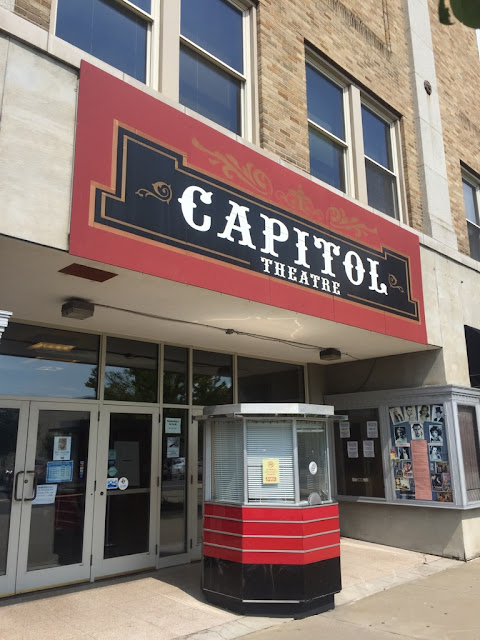The Dawn of Technicolor: 1915-1935
by James Layton and David Pierce
448 pages - 9780935398281
February 2015
George Eastman House
Amazon - Barnes and Noble - Powells
Technicolor wasn't just a technology. It was a vision, a company, an aesthetic and a movement. Film scholars James Layton and David Pierce gave themselves the monumental task of detailing the early and complicated history of Technicolor. The end result was the book The Dawn of Technicolor published by George Eastman House (now known as the George Eastman Museum). The focus of this book iss the formative time between 1915 and 1935 when the film industry was still growing and changing and when the forces behind Technicolor defied all odds to bring color to the movies.
"In enduring these twenty challenging years, Technicolor solidified its position as a market leader in Hollywood and perfected its technology to set the standard for the industry." - Layton and Pierce
It's important to note that this book does not seek out to tell the history of Technicolor movies. Rather it seeks to tell the story of how Technicolor as a technology was invented, implemented and how it eventually became an industry standard.
"Motion pictures are an art form enabled by technology." - Layton and Pierce
The level of technical detail in this book can be overwhelming. It is not a light read but one that is worth the time of any serious film student or budding scholar. Layton and Pierce thoughtfully lay out the history of the company that started Kalmus, Comstock and Westcott, Inc. in Boston, grew into Technicolor which expanded over the years and eventually made it's permanent move to Hollywood. There is much detail about the important figures in the company, many of whom were engineers from MIT. Biographical inserts go into detail about the life and careers of these figures.
Making Technicolor work required tenacity, constant tinkering and perfecting of the technology and a strong belief that there was a future in color films. The industry's transition to sound also resulted in a boom for color movies. As you read the book you learn about the ups and downs, the business and technological difficulties with Technicolor as well as it's eventual transition from the two colors of red and green to a three color process.
 |
| Interior spread of The Dawn of Technicolor. Note the green and red tinted pages and custom bookmark. |
The Dawn of Technicolor is a scholarly work formatted as a coffee table book. This proved to be a challenge for this read. The text is rich with detail and there were not enough visuals for it to be the type of book that you can just flip through. It took me several hours to read this book and I carried it with me everywhere. It weighs a great deal, is very cumbersome to hold and it was inevitable that the spine would break from the strain. If I were the publisher of the book, I would have gone with a smaller format, still large enough to showcase the gorgeous visuals but small enough that one could spend hours reading it comfortably.
The book has over 400 glossy pages, red and green tinted pages to mimic 2-strip Technicolor and extensive backmatter. After the main body of text, there is an annotated filmography which is worth the price of the book alone. It is over 100 pages long and includes extensive detail on every single early Technicolor film ever made. Not only does it list basic information like title, director, studio, cast, synopsis, release date but also has information on the Technicolor elements, whether they exist, notes about the release and reception as well as the current status of archival holdings. Films in this filmography include all color silents and talkies, feature films with color inserts, shorts, animations and abandoned films like The March of Time (1930). It boggles my mind how much work must have gone into collecting all this information and laying it all out. It's worth going through these and learning about the different films. There is no information about home video release in this filmography.
The films discussed in the book start with The Gulf Between (1917) and end with Becky Sharp (1935). Other films discussed at length include:
Wanderer of the Wasteland (1924), The Toll of the Sea (1924), Ben-Hur (1925), Seven Chances (1925), The Black Pirate (1925), The American Venus (1926), The Mysterious Island (1928), The Viking (1928), Redskin (1928), On with the Show (1929), Rio Rita (1929), Sally (1929), The Show of Shows (1929), King of Jazz (1930), Follow Thru (1930), Mamba (1930), Whoopee! (1930), Doctor X (1932) and more.
A heads up to my fellow Boston area classic film enthusiasts, there is a lot of detail in the book about Technicolor's origins in Boston. Our city was a hub of scientific innovation and it's interesting to see how a city so far away from Hollywood could have such an impact on the film industry.
Painstakingly researched, The Dawn of Technicolor is the definitive book on the history of this technology. There is no resource anywhere that will have the level of detail and the volume of information on early Technicolor. It sets the standard for future scholarly works. This book comes highly recommend and is a must for your film studies library.
Now I leave you with a new-to-me discovery, the Fashion News color shorts of the late 1920s. I had never heard of these until I read the filmography in The Dawn of Technicolor. I found one from 1928 on YouTube. Enjoy!
This is my third review for the 2016 Summer Reading Classic Film Book Challenge. I purchased a copy of The Dawn of Technicolor at Cinefest in 2015 and got it autographed by both authors.






































.jpeg)

.jpeg)
.jpeg)
.jpeg)
.jpeg)
.jpeg)
.jpeg)







